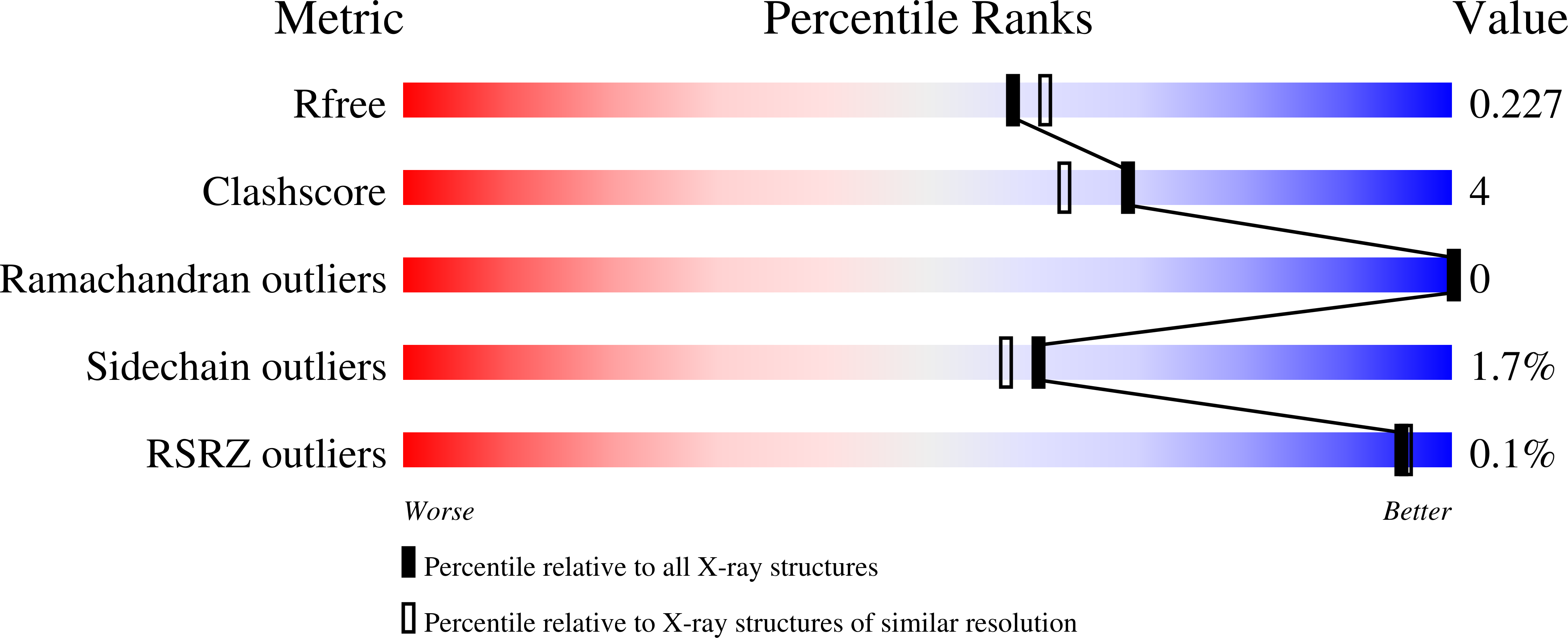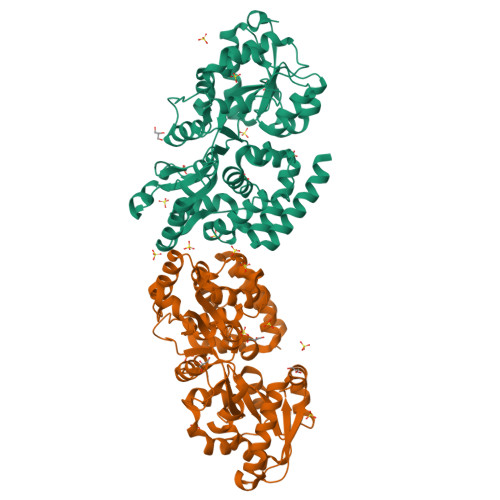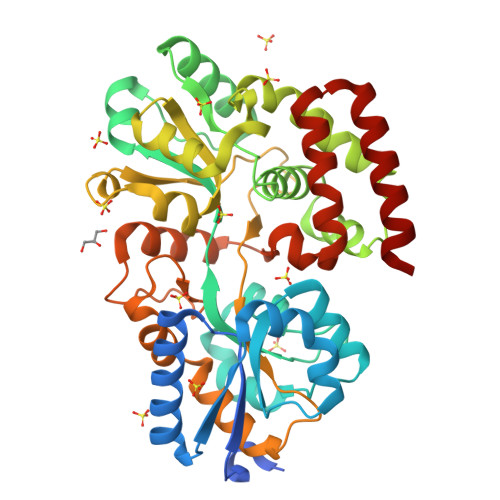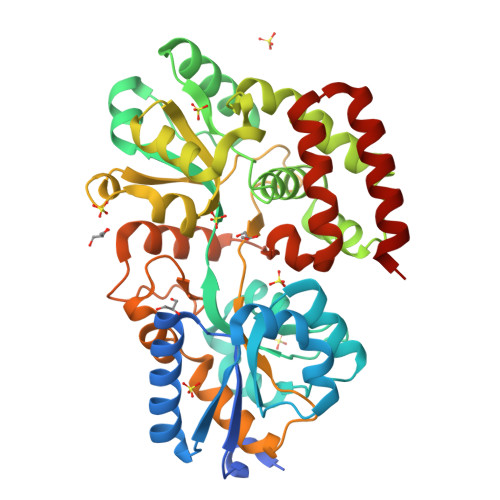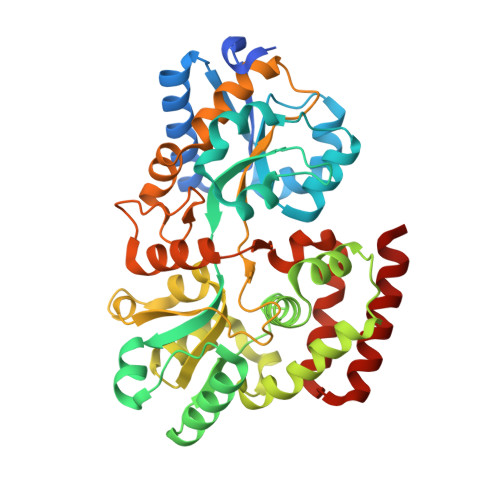Crystal structures of the bacterial solute receptor AcbH displaying an exclusive substrate preference for beta-D-galactopyranose
Licht, A., Bulut, H., Scheffel, F., Daumke, O., Wehmeier, U.F., Saenger, W., Schneider, E., Vahedi-Faridi, A.(2011) J Mol Biology 406: 92-105
- PubMed: 21168419
- DOI: https://doi.org/10.1016/j.jmb.2010.11.048
- Primary Citation of Related Structures:
3OO6, 3OO7, 3OO8, 3OO9, 3OOA - PubMed Abstract:
Solute receptors (binding proteins) are indispensable components of canonical ATP-binding cassette importers in prokaryotes. Here, we report on the characterization and crystal structures in the closed and open conformations of AcbH, the solute receptor of the putative carbohydrate transporter AcbFG which is encoded in the acarbose (acarviosyl-1,4-maltose) biosynthetic gene cluster from Actinoplanes sp. SE50/110. Binding assays identified AcbH as a high-affinity monosaccharide-binding protein with a dissociation constant (K(d)) for β-d-galactopyranose of 9.8±1.0 nM. Neither galactose-containing di- and trisaccharides, such as lactose and raffinose, nor monosaccharides including d-galacturonic acid, l-arabinose, d-xylose and l-rhamnose competed with [(1)(4)C]galactose for binding to AcbH. Moreover, AcbH does not bind d-glucose, which is a common property of all but one d-galactose-binding proteins characterized to date. Strikingly, determination of the X-ray structure revealed that AcbH is structurally homologous to maltose-binding proteins rather than to glucose-binding proteins. Two helices are inserted in the substrate-binding pocket, which reduces the cavity size and allows the exclusive binding of monosaccharides, specifically β-d-galactopyranose, in the (4)C(1) conformation. Site-directed mutagenesis of three residues from the binding pocket (Arg82, Asp361 and Arg362) that interact with the axially oriented O4-H hydroxyl of the bound galactopyranose and subsequent functional analysis indicated that these residues are crucial for galactose binding. To our knowledge, this is the first report of the tertiary structure of a solute receptor with exclusive affinity for β-d-galactopyranose. The putative role of a galactose import system in the context of acarbose metabolism in Actinoplanes sp. is discussed.
Organizational Affiliation:
Institut für Biologie, AG Bakterienphysiologie, Humboldt Universität zu Berlin, Chausseestr. 117, D-10115 Berlin, Germany.







